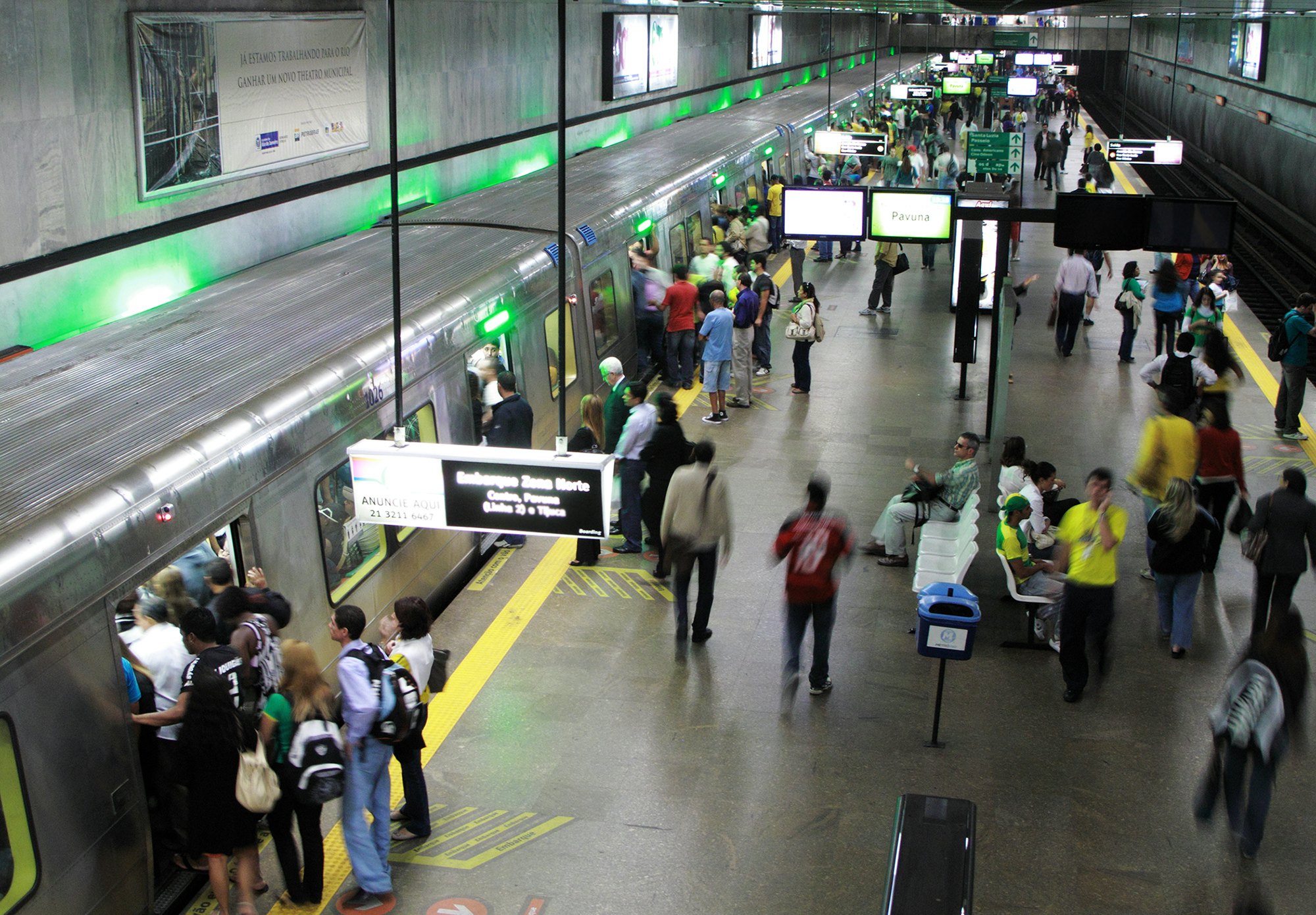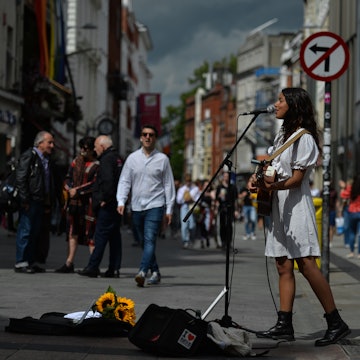

Cycling is one of many ways to get around in Rio de Janeiro. lazyllama/Shutterstock
Rio de Janeiro is vast and complex, and its main concrete arteries are an often intimidating cacophony of revving engines and impatient horns.
However, a clean and efficient metro system and pleasingly inexpensive Ubers and yellow taxis make Rio pretty straightforward to navigate. During daylight hours, exploring Rio’s main streets on foot is generally safe, but best avoided at night where possible. If you find yourself on foot at night, stick to the busiest streets.
Here’s everything you need to know about getting around Rio de Janeiro.

Explore the lengths of the city via the metro
Rio’s metro system is an excellent way to get around – its three lines are air-conditioned, clean and efficient.
Line 1 goes from Ipanema-General Osório to Uruguai in the north zone.
Line 2, which partly overlaps line 1, travels from Botafogo to Pavuna (passing Maracanã football stadium en route).
Line 3 travels between Ipanema-General Osório and the eastern end of Barra da Tijuca at Jardim Oceânico.
You can purchase a cartão pré-pago (prepaid card) from a kiosk in any metro station using cash (no change given) with a minimum payment. You can then recharge the card at any kiosk. Free subway maps are available from most ticket booths. A one-way trip costs around R$7.50.
During Carnaval, the metro operates nonstop from 5am Saturday morning until at least 11pm on Tuesday.
Stretch your budget by taking the bus
Rio’s BRS (Bus Rapid System) features dedicated public transportation corridors in Copacabana, Ipanema, Leblon and Barra. Fares on most buses are just over R$4 per ride.
Every bus has its key destination displayed on the illuminated signboard in front. If you see the bus you want, hail it by sticking your arm straight out (drivers won’t stop unless flagged down).

Beach-hop on an orange bicycle
Rio has many kilometers of bike paths along the beach, around Lagoa and along Parque do Flamengo. The city's public bike-sharing scheme, Bike Rio, features bright-orange bikes found at more than 250 stations.
After registering on the website or the app (Bike Itaú), you can buy a monthly pass or a two-day pass. The bikes are released via mobile phone or app, and instructions are available in English at the stations. If you have the Uber app, you can also access the service.
Many (but not all) stations also have a pay-on-the-go option for a day pass. After you swipe your credit card, you'll be given a code to use to release any bike. The first 30 minutes won't cost extra; after that there is a per hour fee. However, you have an unlimited number of checkouts with a 24-hour day pass (same with the two-day and monthly pass).

Glide overground on the light rail (VLT)
Rio's relatively new light rail – the VLT – is part of a massive urban renewal project helping to revitalize Centro. Launched in 2016, the VLT has 26 stations in Rio, running on two different routes through downtown.
For visitors, the VLT provides handy access to Cinelândia (outside the metro) to Praça Mauá (to the stop labeled Parada dos Museus). To reach Praça XV (Quinze) de Novembro or Praça Tiradentes, take the Praia Formosa line, which you can access on Rua Sete de Setembro, just west of Rio Branco. The VLT also goes to Aeroporto Santos Dumont and Rodoviária Novo Rio bus station.
For maps, schedules and other info, download the free VLT Carioca app.

Download an app to find a taxi
Rio’s yellow taxis are plentiful and easy to hail, particularly via free apps like 99Taxis or Easy Taxi. They're generally a speedy way to zip around and are generally safe. There is flat rate plus about R$2.50 per kilometer (with higher pricing at night and on Sunday). You can register to pay with a bank card or PayPal.
Uber is also popular. A group traveling any distance across the city will often find it cheaper to split an Uber fare than pay for the metro individually.
Local taxis that can be ordered in advance are about 30% more expensive than regular taxis. From the Galeão Airport (GIG) you can prebook an airport taxi service to avoid any hassles on arrival.
Note: Tips are not expected, but it’s common to round up the fare.
Skip the moto-taxi
In Rocinha and some other favelas, you may well find moto-taxis (basically a lift on the back of a motorcycle) offering short rides (usually from the bottom of the favela to the top or vice versa) beginning at R$5. However, unless you have a legitimate reason to visit, there is little point – or respect – randomly venturing into a favela just for a gander.
Hire a car as a last resort
Driving in Rio can be a frustrating experience even if you know your way around – traffic snarls and parking problems do not make for an enjoyable holiday. That said, car-rental agencies can be found at both airports and scattered along Av Princesa Isabel in Copacabana. At the international airport major brands providing rental cars include Hertz, Budget and Unidas.
Accessible transportation in Rio de Janerio
Rio’s penchant for haphazard paving, plus a distinct lack of lifts at many metro stops, make the city somewhat challenging to navigate by wheelchair or for those with reduced mobility.
Especial Coop Taxi has vehicles with lifts for wheelchair users. It also has its own app, Especial Coop. If you'd prefer to reserve a car, a few reliable radio-taxi operators include Transcoopass, Coopertramo and Transcootour.














